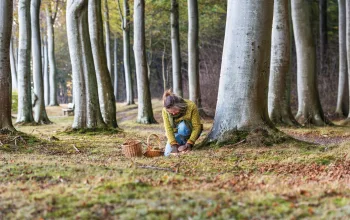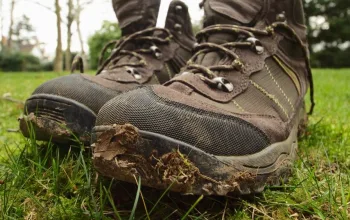Build quality
By their very nature trail shoes will be lighter and less sturdily built than walking boots, but they’re still going to have to take plenty of stick on rough ground so you need to ensure they’re up to it.
Look for well-lugged soles for good grip, rubber rands – especially around the toes which is one of the areas that gets the most abuse – good cushioning (particularly if you plan to run in them) and adequate arch and heel support.
And yes, you can get all this in a lightweight shoe so there’s no reason to assume you’ll be looking for a trimmed down version of a walking boot; indeed, trail shoes and walking boots share very little in common other than the terrain you use them on…
Waterproof or not?
Plenty of trail shoes come with waterproof and breathable membranes; and plenty don’t. Which you go for depends very much on personal preference. But if you’re likely to be trail running as much as (or more than) walking then breathable uppers are more important than water resistance. Firstly this is because your feet are likely to get pretty warm. Secondly, if your shoes are waterproof, avoiding puddles that slop over the top of the shoes when you’re running is difficult, and finally, because you’re probably only going to be out on the trail for relatively short periods, wet feet are not such a big issue anyway.
For walkers, however, if you’re planning full days out in the hills it’s obviously better to keep your feet dry. That said, even the best waterproof upper will only work as long as you don’t end up in puddles or bogs so deep that water can get in over the top! If you are, then you need to be looking for full-on high-ankled winter boots.
Find the right fit
Take time trying your trail shoes out in the shop, and wear the same socks you’ll be wearing when on the hills while doing so. A good shop will let you walk up and down the street in front of the shop. Don’t rush into buying; if you’re not 100 per cent happy with the way the shoes feel, walk away – without them.
Look after them
Don’t forget to treat your trail shoes with some form of waterproofing and/or leather/fabric conditioner on a regular basis. Don’t just throw them in a corner after your walk. Always dry them out properly (not on a direct source of heat) and then treat them once dry.
Related: Top 10 trail shoes
For more tips on boots and kit care, see our how to section.




















